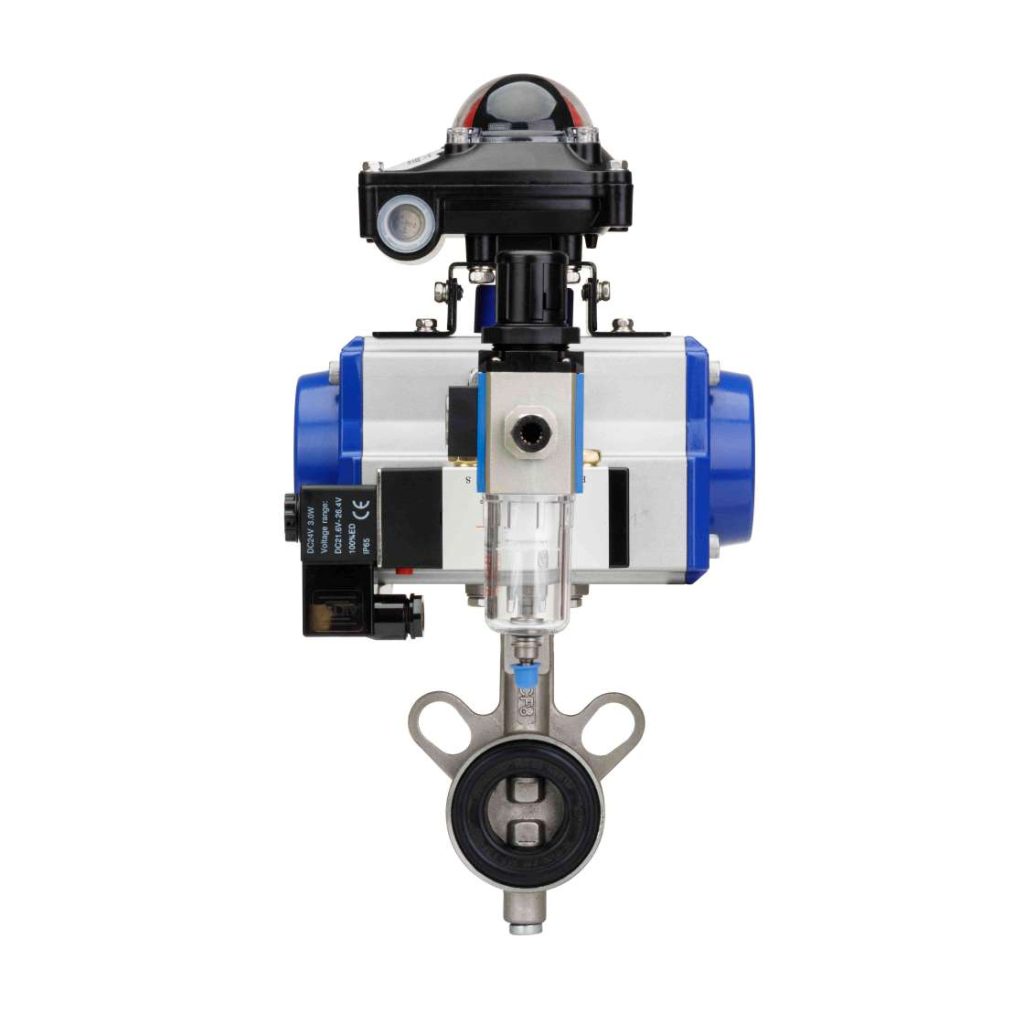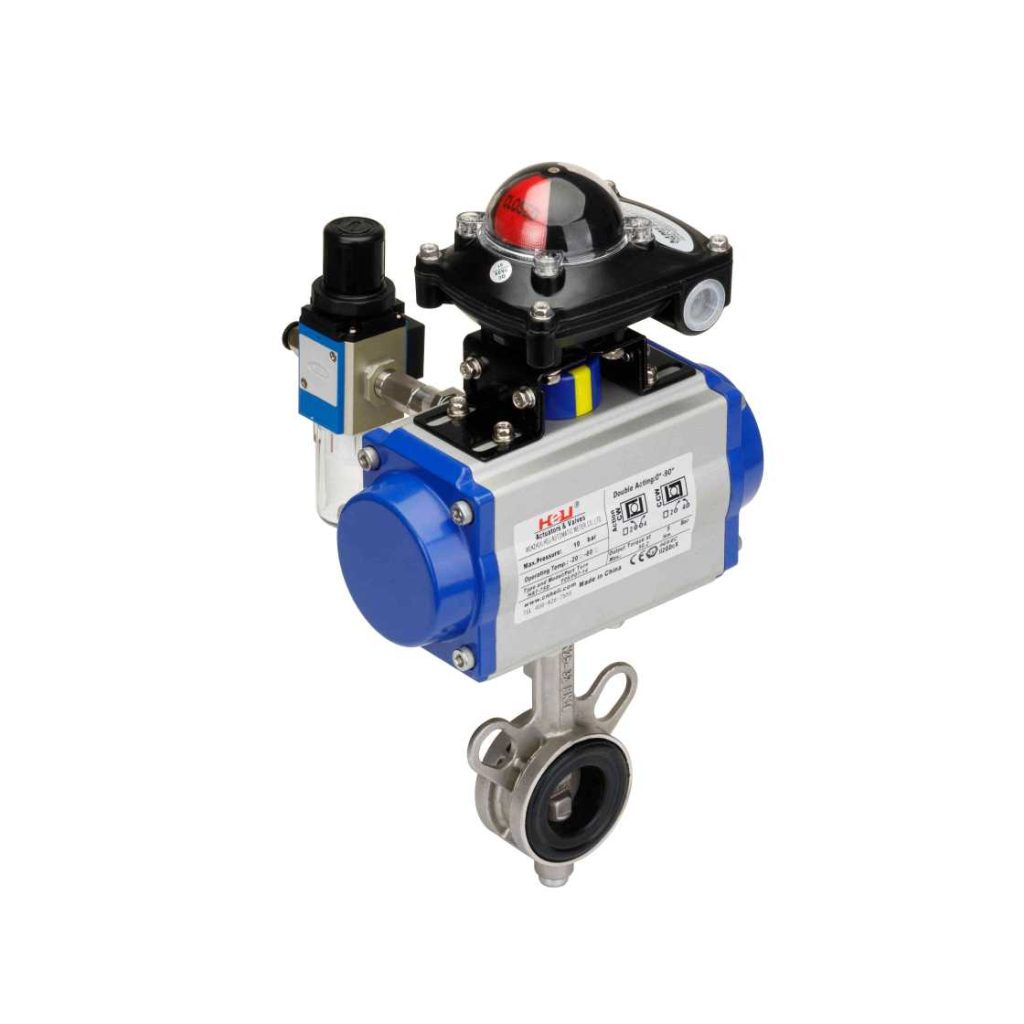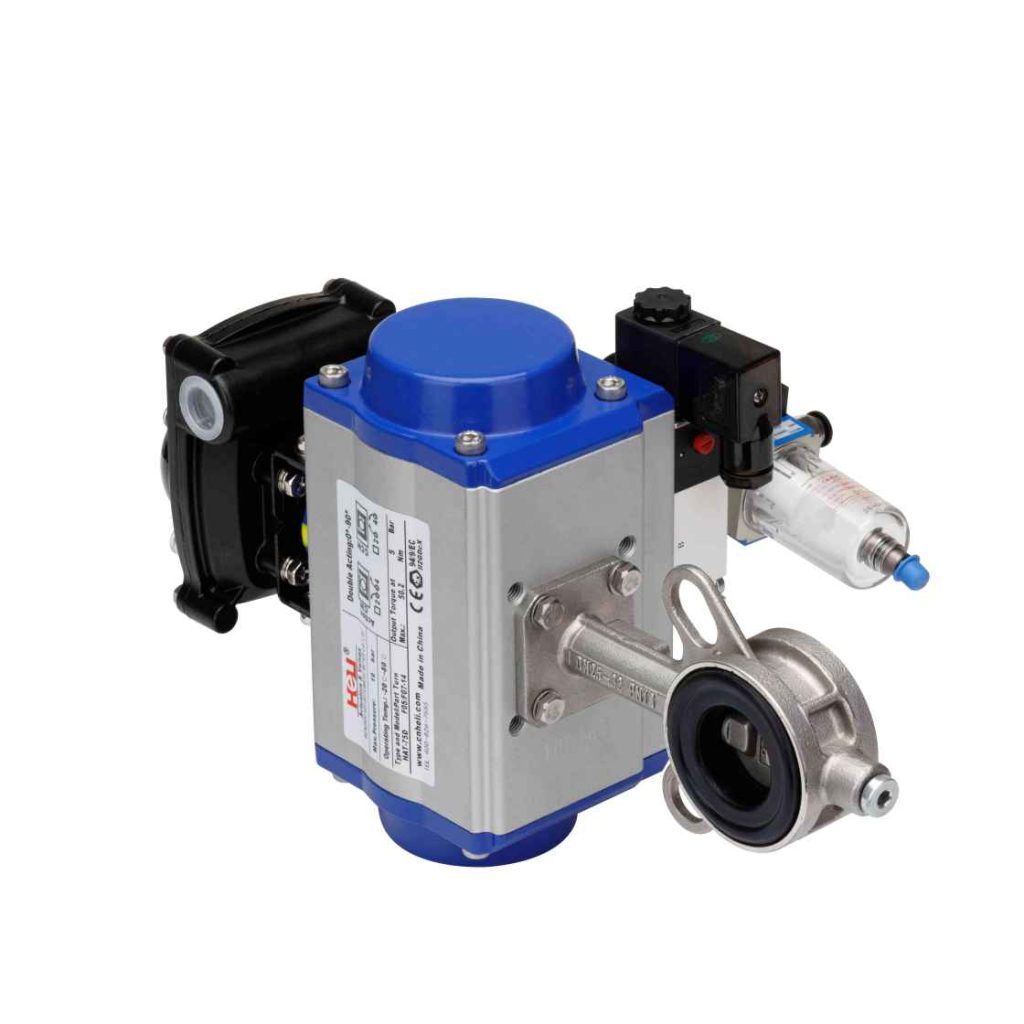Pneumatic butterfly valves are essential components in various industrial processes, offering efficient control over the flow of liquids, gases, and slurries. These valves, powered by compressed air, are widely used for their durability, reliability, and quick actuation. In this article, we will explore the working principle, benefits, and applications of pneumatic butterfly valves, as well as why they are increasingly becoming the preferred choice for many industries.

What is a Pneumatic Butterfly Valve?

A pneumatic butterfly valve is a type of quarter-turn valve that uses compressed air to control the valve’s opening and closing mechanism. It consists of a disc mounted on a rotating shaft, which acts as the valve’s closure element. When compressed air is supplied to the actuator, it causes the disc to rotate, either fully opening or closing the valve. The pneumatic actuator can be either a spring return type or double-acting type, depending on the required application. The butterfly valve is particularly well-suited for applications where space is limited because it has a compact design and is lightweight compared to other valve types. The ease of operation, with a simple 90-degree turn to fully open or close the valve, makes it a popular choice for many industries.

Leave a Reply